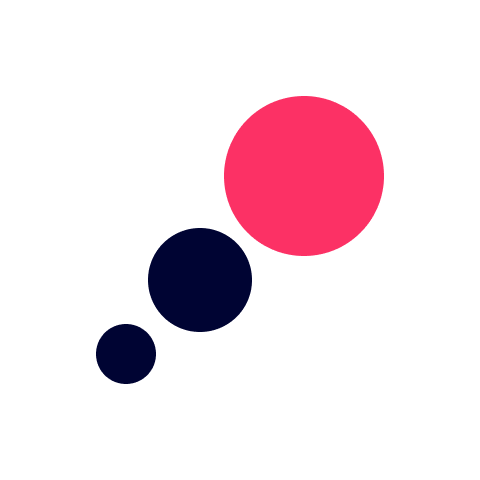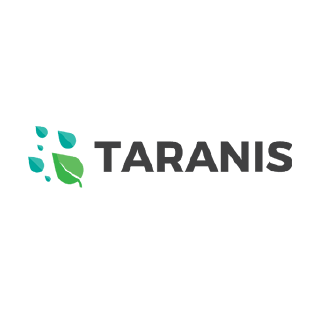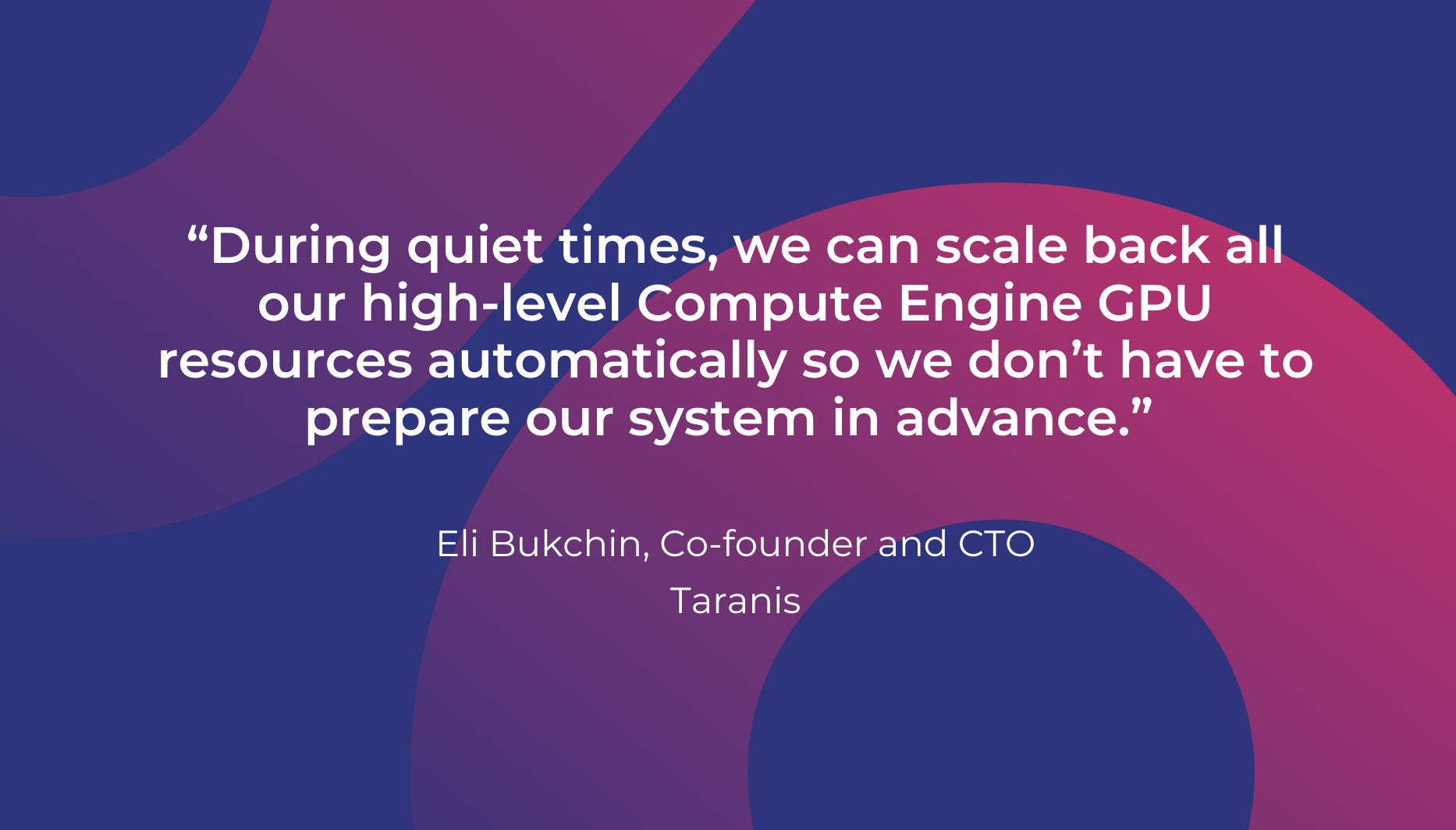
Processing millions of medical images in the cloud: DoiT helps QMENTA keep costs under control
QMENTA and DoiT optimize clinical trials, using AI and Google Cloud for efficient medical image management, yielding a 22% cost reduction.
Automatically manage cloud compute for optimized costs and agility
Make sense of spend and chargeback to align with your business

Optimize BigQuery costs with actionable recommendations and usage insights
Maximize AWS Spot savings and minimize disruptions for optimized scaling
Autonomously identify cost spikes early, with zero configuration
Organize your billing data for better business decisions
Connect your favorite tools to DoiT’s products
Learn how we’re redefining support with our customer reliability engineering
View our live support and customer satisfaction statistics in real-time
Proven solutions to cloud complexity
A global team of committed cloud experts with decades of experience in cloud architecture, Kubernetes, machine learning and much more
Learn how DoiT enables critical FinOps capabilities
DoiT Accelerators give you the dedicated cloud expertise and resources to quickly adopt new cloud services and build production-ready workloads with them.
Implement end-to-end Gen AI solutions into your product with Amazon Bedrock and more
Accelerate new EKS deployments
Develop a production-ready, modern data platform on AWS
Implement end-to-end Gen AI solutions into your product with Vertex AI and more
Accelerate new GKE deployments
Develop a production-ready, modern data platform with BigQuery and beyond

Proud to be an award‒winning multicloud partner to top‒tier cloud providers

Enabling cloud growth and unlocking revenue through expert partnership

Accelerate new customer growth and Marketplace integration on AWS and GCP
Read the latest insights, tips and perspectives from our team of cloud experts
See how we’ve helped thousands of public cloud customers achieve their goals
Listen to our experts and customers share tangible tips for navigating the cloud.
Discover foundational expertise and future-ready recommendations for the cloud
Tech talks and interactive expert sessions delivered both virtually and in person
Google Cloud Compute Engine instance comparison
Read documentation, product updates, and more
See what's new from DoiT in our latest news and announcements
How we focus on security, compliance, and privacy
Watch product demos, interviews and more from our cloud experts
Browse our open positions and learn more about what it takes to be a Do’er
Meet the team leading DoiT and our customers on a journey of hypergrowth
See what's new from DoiT in our latest news and announcements


According to a United Nations report, the world’s population will reach an estimated 9.8 billion by 2050, requiring a significant increase in food production. Meanwhile, urbanization as well as unpredictable weather patterns and global warming are causing a reduction in agricultural production.
Using drone technology and AI, Taranis is helping farmers to meet this challenge by providing them with modern tools to reduce crop loss, increase yields, and lower costs. The company was founded in 2014 and now has branches worldwide, with more than 20 million acres managed using its intelligence platform.
“We use drones to take super high-resolution photographs of fields to leaf level, in addition to using satellite and plane imagery,” explains Eli Bukchin, Co-founder and CTO at Taranis. “The big problem farmers face is maintaining oversight on hundreds of thousands of acres: up to 40 percent of crops are routinely lost because of insects, crop disease, weeds, and nutrient deficiencies. We have a team of 30 agronomists who work on tagging images to feed AI models that enable us to identify problems before they affect the crops, so farmers can intervene earlier in a more targeted way and use fewer chemicals.”
As Taranis works all over the world and often in remote locations, it needed to find a way to upload large volumes of image files, along with creating a scalable infrastructure powerful enough to test complex machine learning models. Google Cloud Platform (GCP) along with TensorFlow provided the answer.
“We collect vast amounts of data from all over the world, in places with not much connectivity including Russia, Eastern Europe, and South America,” says Eli. “Developing methods to upload data in those conditions is a challenge. Our priorities are better connectivity and speed.”
Uploading large volumes of data and training machine learning models requires a lot of processing power, which can be costly. As a growing startup, Taranis did not want to invest millions of pounds on infrastructure, but still needed to handle large volumes of data. “Each of our drone flights collects around 10,000 images, and each image is between 10MB and 20MB,” says Eli. “We looked for a way of getting those images into our system as quickly as possible, as well as improving our machine learning training performance.”
To do that, Taranis migrated to GCP. “The Google data centers in South America, Australia, and Europe offer really fast connectivity, and can handle the large volumes of drone images we upload. We have a throughput of around 30TB in total,” says Eli. “For processing the images once they are uploaded, we use V100 GPUs on Compute Engine. We have the capacity to easily scale from 1,000 to 4,000 V100s, and the system scales automatically when new images arrive. Information is deduced from the images, which is then uploaded to a Cloud SQL database before being served to our customers. We also have an image processing pipeline on Kubernetes Engine for our satellite images, in addition to using Cloud Functions and Cloud Pub/Sub.”
Flexibility and scalability are key to the Taranis image serving pipeline. “Agriculture is a seasonal business, so we have certain months of peak activity followed by quiet months, and we also have peaks throughout the day,” says Eli. “During quiet times, we can scale back all our high-level Compute Engine GPU resources automatically so we don’t have to prepare our system in advance.”
Preventing Crop Loss with AI
“For our machine learning model training pipeline, we use TensorFlow,” Eli explains. “Choosing TensorFlow has helped us develop our models rapidly, as there is a lot of support available through the open source community. To develop our models, we use tens of millions of photographs that we have collected over the past year and a half, which have been analyzed and tagged. Each photo might have up to a thousand items of interest, such as insect damage or leaf discoloration, so the data volumes are really significant. In total, we have processed around 100 million distinct features in around 700,000 images.”
The insights provided through Taranis’s dashboards give farmers the information they need to intervene early and prevent crop loss. “We enable farmers to target problems with concrete solutions, like adding fertilizer in a particular area that is low in nutrients. We are also looking to integrate our platform with autonomous farm machinery so a farmer can deploy the solution in a few clicks.”
Thanks to GCP, Taranis is now able to upload its drone images effectively. “Before, uploading was three or four times slower, and could take up to a day rather than a few hours,” says Eli. “The difference is really substantial.”
Moving to GCP has also helped Taranis to reduce time spent on operations and simplify system updates. “We now release features almost continuously,” says Eli. “With Kubernetes, we can run parallel new and old versions, so we have fewer downtimes and we don’t have to schedule updates. This allows us to improve the product faster. We can test better and get faster feedback on new products and services.”
“Our sales team doesn’t need to worry about bringing a new customer on board, our infrastructure can scale to meet the workload generated by millions more acres. We are also able to work with customers in locations that were previously unreachable,” he adds. Migrating to GCP has also helped Taranis to reduce its costs. “Our cost per photo taken is now ten times lower,” says Eli.
Now, Taranis is planning to start using more data analytics tools on GCP. “We’re currently considering how Cloud Bigtable, BigQuery, and Cloud Dataflow might fit with our business needs,” says Eli. “As we run a lot of training instances, we need a way to analyze that data better, so we’re currently building the GCP infrastructure to gain BI insights into our own system.”
“Our focus for the upcoming year is further geographical expansion, and continuously improving our machine learning models, as well as working on categorizing new ways to detect diseases,” says Ofir Schlam, co-founder and CEO at Taranis. “Thanks to Google Cloud Platform, we’re able to focus on the bigger picture.”

QMENTA and DoiT optimize clinical trials, using AI and Google Cloud for efficient medical image management, yielding a 22% cost reduction.

DoiT helps Bdeo optimize costs for its visual intelligence technology

DoiT helps Superbet manage cloud costs as it grows
From cost optimization to cloud migration, machine learning and CloudOps,
we’re here to make the public cloud easy.
Ready to get started?